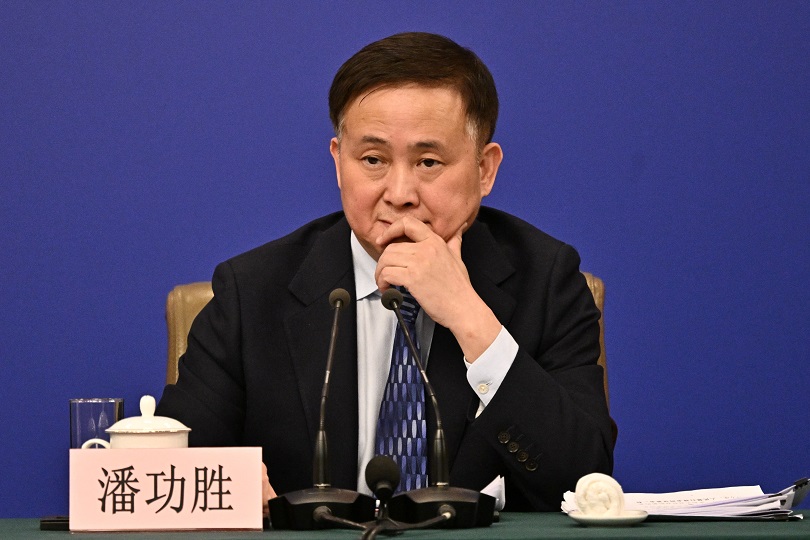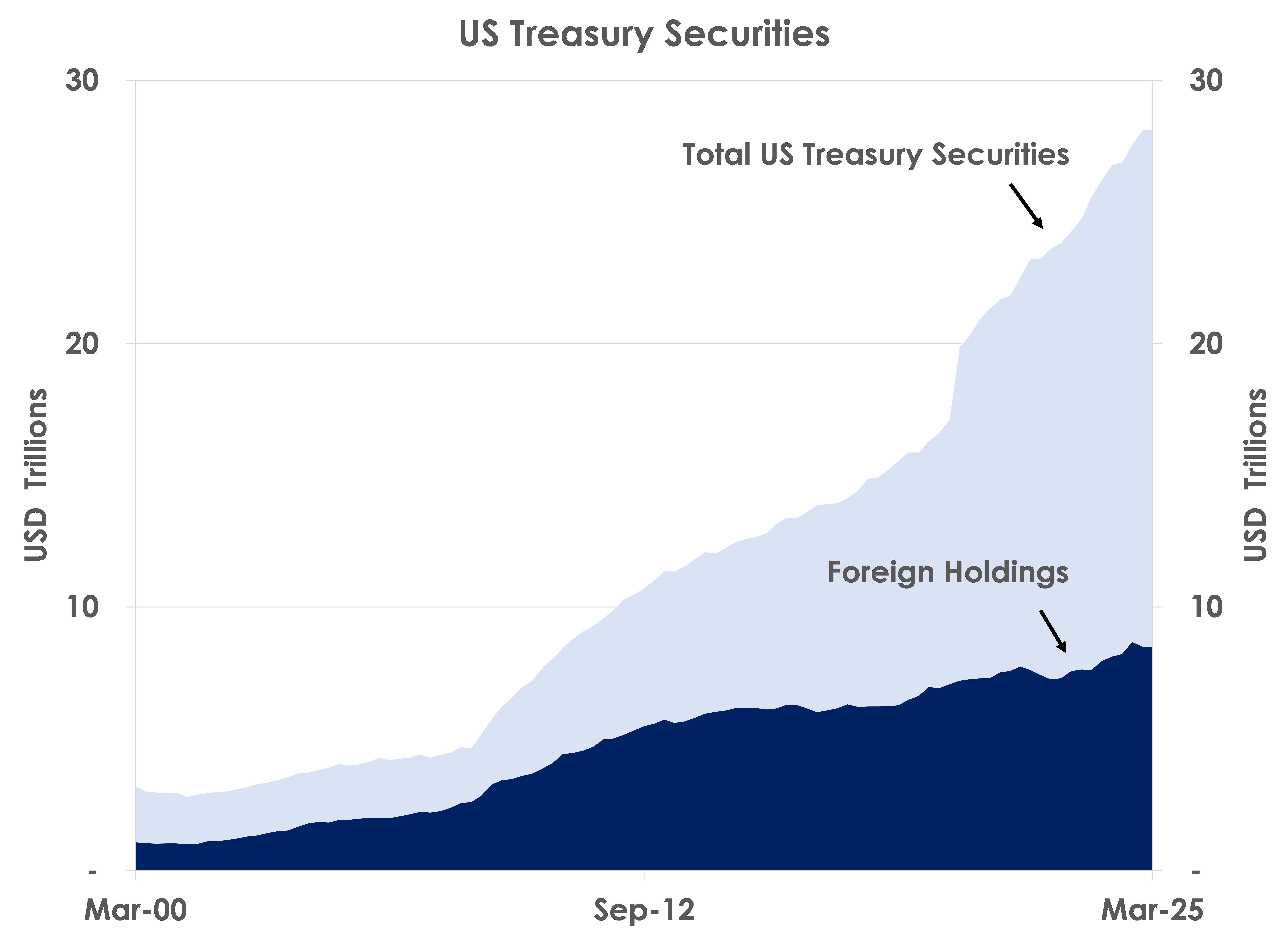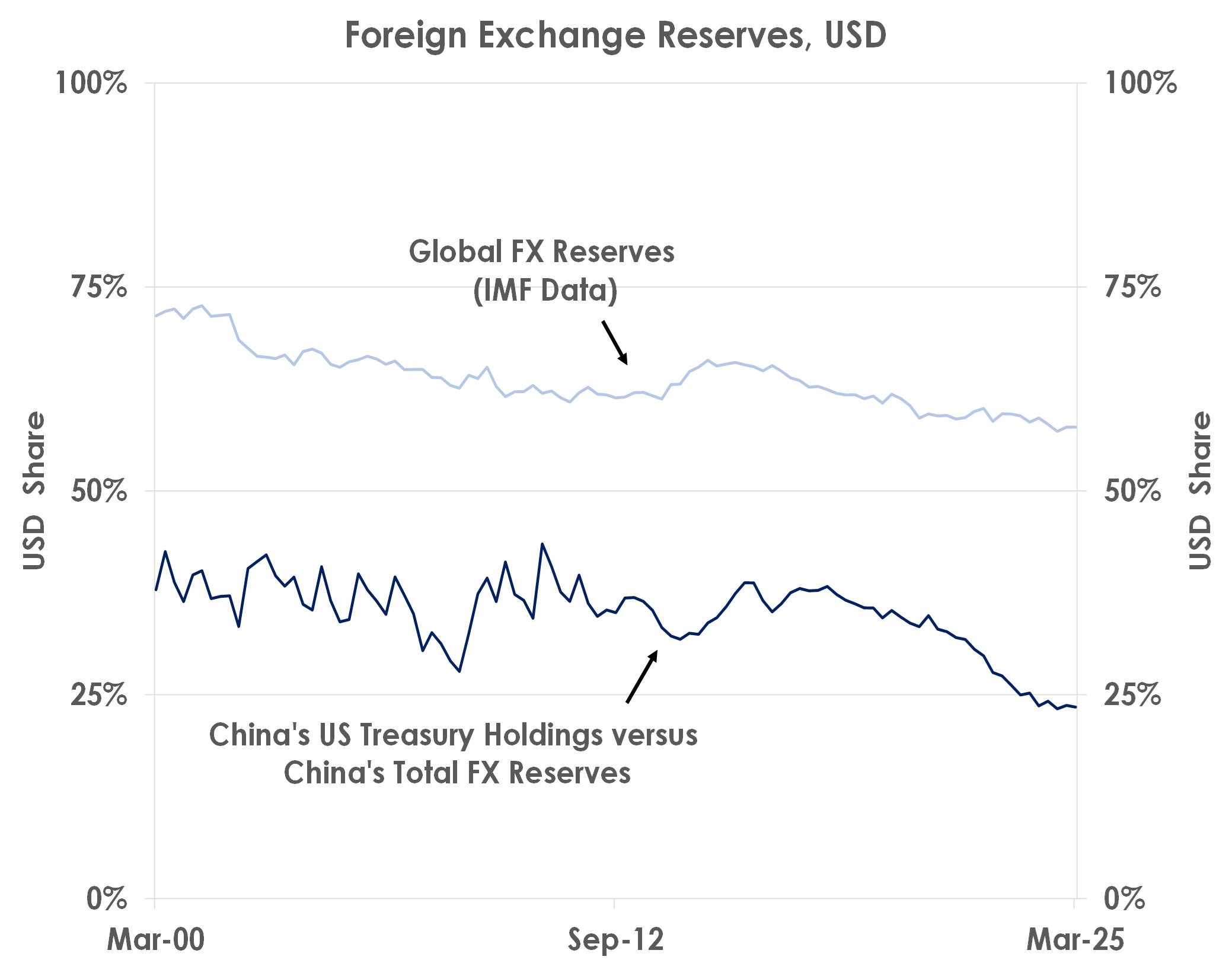
Governor of People’s Bank of China, Pan Gongsheng. AFP.
In response to 145% US tariffs, Beijing has lifted tariffs to 125%, curbed rare earth exports and tightened regulations on US firms in China. In contrast, Beijing has not devalued the CNY nor threatened to sell its UST holdings.

Source: Bank of Singapore, Bloomberg
US Treasury securities total USD28.1 trillion according to Federal Reserve (Fed) data, close to US GDP of USD29.3 trillion. Foreign investors hold USD8.5 trillion or 30% of the market as the first chart shows. One the largest holders is the People’s Bank of China. The next chart shows the PBoC holds USD760 billion of USTs according to the US Treasury’s data - unsurprising given China holds the world’s largest FX reserves at USD3.2 trillion, 25% of total reserves at USD12.6 trillion.

Source: Bank of Singapore, Bloomberg
The PBoC has been steadily reducing its UST holdings since the pandemic, from USD1.1 trillion to USD760 billion, but a disorderly liquidation now would crash the US bond market.

Source: Bank of Singapore, Bloomberg
Importantly, the US Treasury’s data is unlikely to capture China’s total holdings. The last chart shows just 24% of the PBoC’s FX reserves are reportedly in Treasuries. But the IMF’s data on global FX reserves shows 58% are held in USD assets. China’s UST holdings may thus be as high as USD2 trillion. We think the PBoC is therefore only likely to liquidate its UST holdings as a last resort given the risks of massive US retaliation for crashing its bond market as well as the adverse impact on China’s remaining holdings of USTs and other foreign bonds.